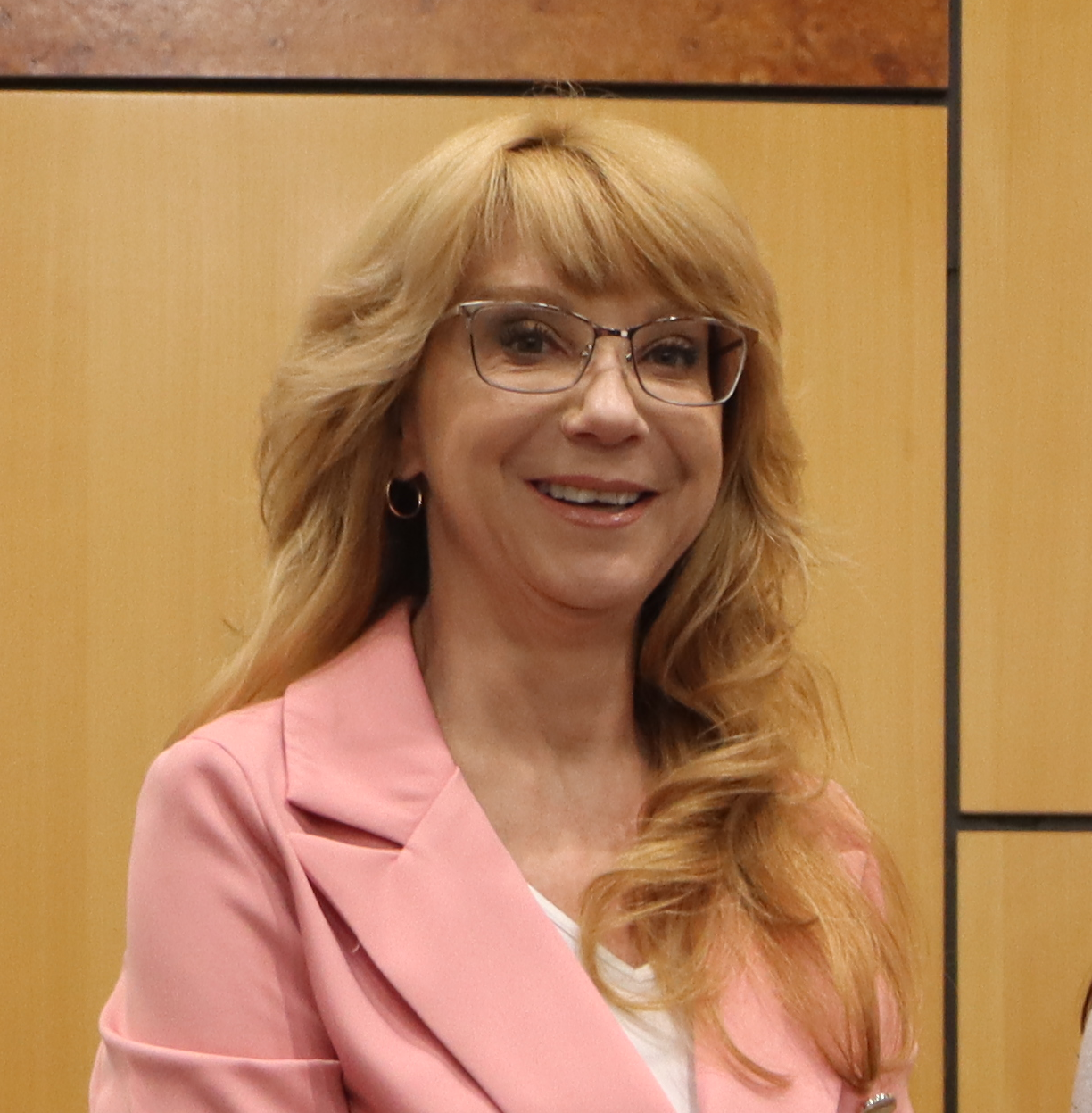Dr. Kimberlianne Podlas
Professor; Department Head 2016 - 2023
Joined Media Studies faculty in 2004
About
After graduating from the University of Buffalo School of Law, Kimberlianne Podlas practiced criminal appellate law in New York. She argued more than 100 cases, including several in the state’s high court.
In 2004, Podlas joined the Department of Media Studies where she taught courses in media law and television studies. Her research was situated at the intersection of law and media, and considered: (1) emergent legal issues pertaining to contemporary media, its creation, and distribution, and (2) the relationship between television’s legal lore and the public’s understandings about it, and how these contribute to legal consciousness. Podlas published approximately 50 journal articles and book chapters, produced materials for professional certification and continuing education seminars, won several national conference awards, and has been cited by both appellate courts and popular media.
Read Dr. Kimberlianne Podlas’ In Memoriam here.
Selected Publications
- The New Common Rule Corrects an Old Misunderstanding: Journalistic Investigation, Biographical Interviewing, Legal Research, and Creative and Historical Writing Focusing on Specific People Are Not “Research” “Involving Human Subjects” Requiring IRB Approval, 44 Seton Hall Legis. J. 253 (2020)
- Linking to Online Content Becomes Copyright Infringement: Lessons from Aereo, 63 J. Broad. & Electronic Media 160 (2019)
- Viewer Disability and Television Accessibility: Closed-Captioning and Video Description Requirements in Today’s Television Environment, 24 Cardozo J. Equal Rights & Soc. Justice 1 (2018)
- The “CSI Effect,” in Oxford Encyclopedia of Criminology (2016) (Oxford University Press)
- Website Accessibility and the Americans With Disabilities Act, 19 J. Internet L. 3 (Nov. 2015)
- Linking to Liability: When Linking to Leaked Movies, Scripts, and Television Shows Is Copyright Infringement, 12 Harvard J. Sports & Ent. L. 41 (2015)
- Off the Campaign Trail and Into the Courthouse: Do Political Uses of Music Infringe on Artist Trademarks, 59 J. Broadcasting & Elec. Media 41 (Mar. 2015).
- Media Activity and Impact, Chapter 5, in Sexting: An Examination of Theory and Policy (Hiestand & Weins, Eds., 2014)
- Applying Aereo to the Internet: Understanding Volitional Links to Films, Television Episodes, and Scripts as Copyright Infringement, 10 J. Internet L. 1 (Nov. 2014)
- I Do Not Endorse This Message! Does a Political Campaign’s Unauthorized Use of a Song Infringe on the Rights of the Musical Performer? 24 Fordham Intell Prop. Media & Ent. L.J. 1 (2013)
- Artistic License or Breach of Contract? Creator Liability for Deceptive or “Defective” Documentary Films and Television Programs, 33 Loyola (of Los Angeles) Ent. L. Rev. 67 (2012-13)
- The “Legal Epidemiology” of the Teen Sexting Epidemic: How the Media Influenced a Legislative Outbreak, 12 U. Pittsburgh J. Tech. L. & Pol’y 1 (Fall 2011/ Sp 2012)
- Testing Television: Studying and Understanding the Impact of Television’s Depictions of Law and Justice, in Law and Justice on the Small Screen (Robson & Silbey, Eds. 2011)
- Funny or No Laughing Matter?: How Television Viewers Interpret Satires of Legal Themes, 21 J. Seton Hall J. Sports & Ent. L. 289 (2011)
- Does Exploiting a Child Amount to Employing a Child? The FLSA’s Child Labor Provisions and Children on Reality Television, 17 UCLA Ent. L. Rev. 39 (2010)
- The Moral of the Story. . . Musical Artists Must Protect Their Own Rights in Digital Music, 10 Wake Forest Intell. Prop. L. J. 265 (2010)
- “I’m a Politician, But I Don’t Play One on TV”: Applying the Equal Time Rule (Equally) to Actors-Turned-Candidates, 20 Fordham Intell Prop. Media & Ent. L.J. 165 (2009)
- Respect My Authority! South Park’s Expression of Legal Ideology and Contribution to Legal Culture, 11 Vanderbilt J. Ent. L. 491 (2009)
- Guilty on All Accounts: ‘Law & Order’s Impact on Public Perceptions of Law and Order, 18 Seton Hall J. Sports & Ent. L. J. 1 (2008)
- A Funny Thing About Lawyers on The Simpsons, in Lawyers In Your Living Room (Asimow, Ed., 2008)
- The Impact of Television on Cross-Examination and Juror “Truth,” 14 Widener L. Rev. 479 (2008)
- The “CSI Effect” and Other Forensic Fictions, 27 Loyola (of Los Angeles) Ent. L. Rev. 87 (2007)
- Homerus Lex: Investigating American Legal Culture Through the Lens of “The Simpsons,” 17 Seton Hall Sports & Ent. L. Rev. 93 (2007)
- Primetime Crimes: Are Reality Television Programs Illegal Contests in Violation of Federal Law, 25 Cardozo Arts & Ent. L. Rev. 101 (2007)
- Tales That Television Tells: Reality Narratives and Public Opinion, 13 Tex. Wesleyan L. Rev. 31 (2006/2007)
- The “CSI Effect”: Exposing the Media Myth, 16 Fordham Intell. Prop. Media & Ent. L. J. 429 (2006)
- Broadcast Litigiousness: The Construction of Legal Consciousness, 23 Cardozo Arts & Ent. L. J. 465 (2005)
- The Monster in the Television: The Media’s Contribution to Consumer Litigation Boogeyman, 34 Golden Gate Univ. L. Rev. 239 (2004)
- As Seen on TV: The Normative Influence of Syndi-Court on Contemporary American Litigiousness, 11 Villanova Sports & Ent. L. J. 1 (2004)
- Should We Blame Judge Judy, The Messages of TV Courtrooms, 86 Judicature 38 (July-Aug 2002)
- The Effects of Syndicated Courtrooms on Jurors, 25 Am. J. Trial Advocacy 557 (2002)
- Please Adjust Your Signal: How Television’s Syndi-Courtrooms Bias Juror Citizenry, 39 Am. Bus. L.J. 1 (2001)
